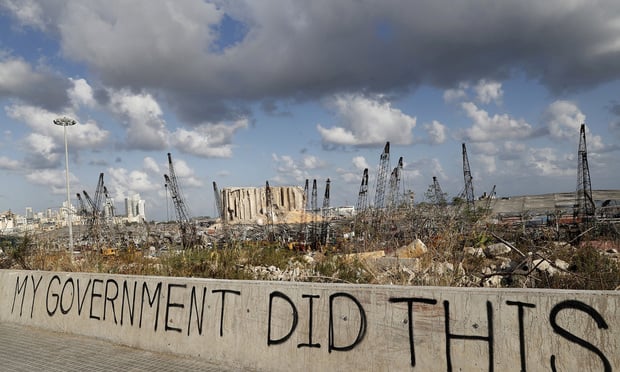 This past summer in Beirut, some 2,750 metric tons of ammonium nitrate, which was stored for six years in the city's port without proper safety measures, detonated, and caused around 200 deaths, 7,500 injuries and an estimated $15 billion in property damage as seen in the above photo of the port. Public fury over the massive explosion turned violent as protesters stormed government institutions and clashed with security forces, according to the Associated Press. (Credit: Hussein Malla/AP Photo)
This past summer in Beirut, some 2,750 metric tons of ammonium nitrate, which was stored for six years in the city's port without proper safety measures, detonated, and caused around 200 deaths, 7,500 injuries and an estimated $15 billion in property damage as seen in the above photo of the port. Public fury over the massive explosion turned violent as protesters stormed government institutions and clashed with security forces, according to the Associated Press. (Credit: Hussein Malla/AP Photo)
On Jan. 16, 2021, an A.P. Moller-Maersk A/S ship sailing out of a Chinese port lost 750 containers in the Pacific, one of a spate of such incidents in the recent past. Potentially among the containers foundering and floundering in the sea was cargo belonging to Allianz Global Corporate & Specialty (AGCS) clients.
Recommended For You
Want to continue reading?
Become a Free PropertyCasualty360 Digital Reader
Your access to unlimited PropertyCasualty360 content isn’t changing.
Once you are an ALM digital member, you’ll receive:
- Breaking insurance news and analysis, on-site and via our newsletters and custom alerts
- Weekly Insurance Speak podcast featuring exclusive interviews with industry leaders
- Educational webcasts, white papers, and ebooks from industry thought leaders
- Critical converage of the employee benefits and financial advisory markets on our other ALM sites, BenefitsPRO and ThinkAdvisor
Already have an account? Sign In Now
© Touchpoint Markets, All Rights Reserved. Request academic re-use from www.copyright.com. All other uses, submit a request to [email protected]. For more inforrmation visit Asset & Logo Licensing.







